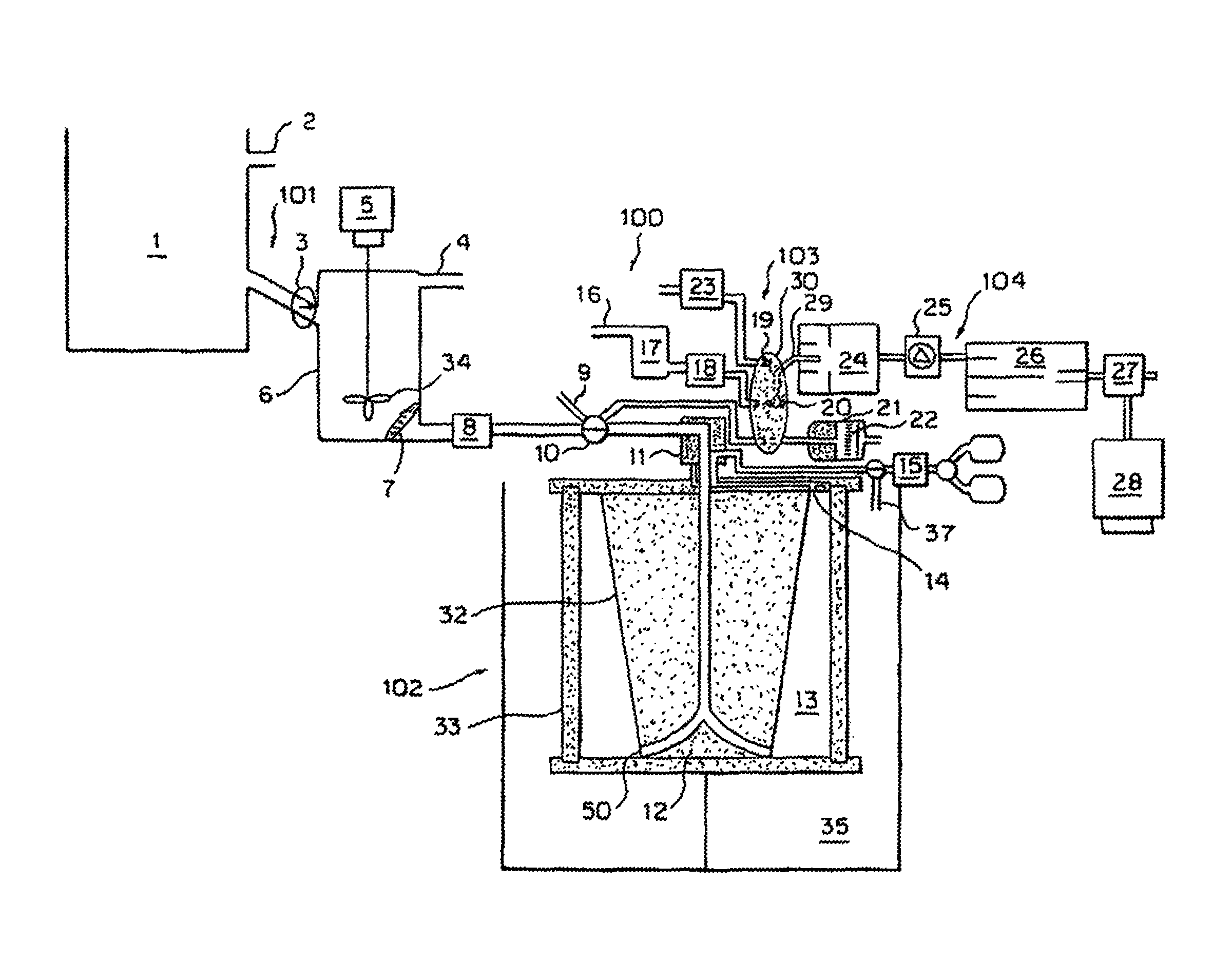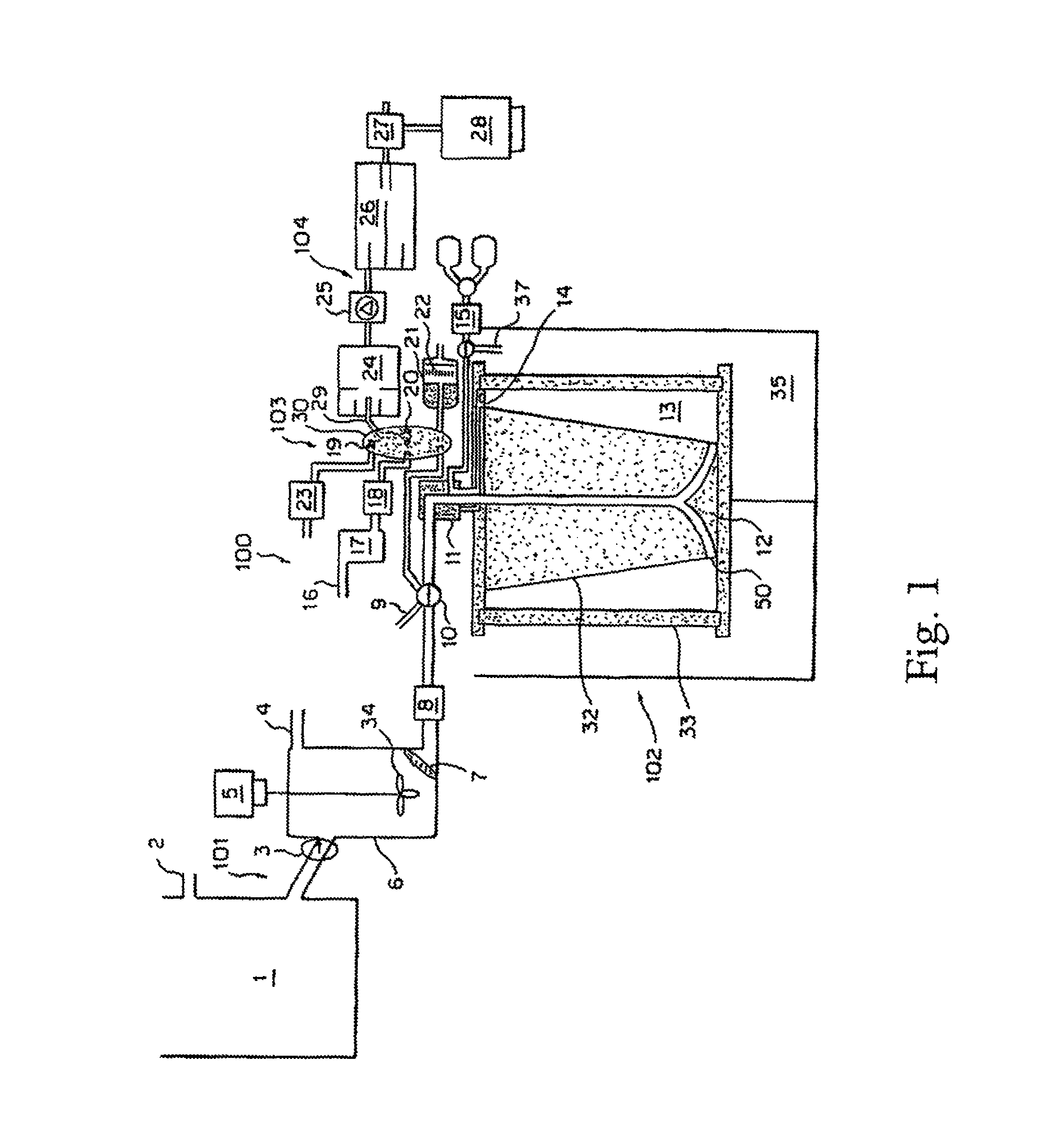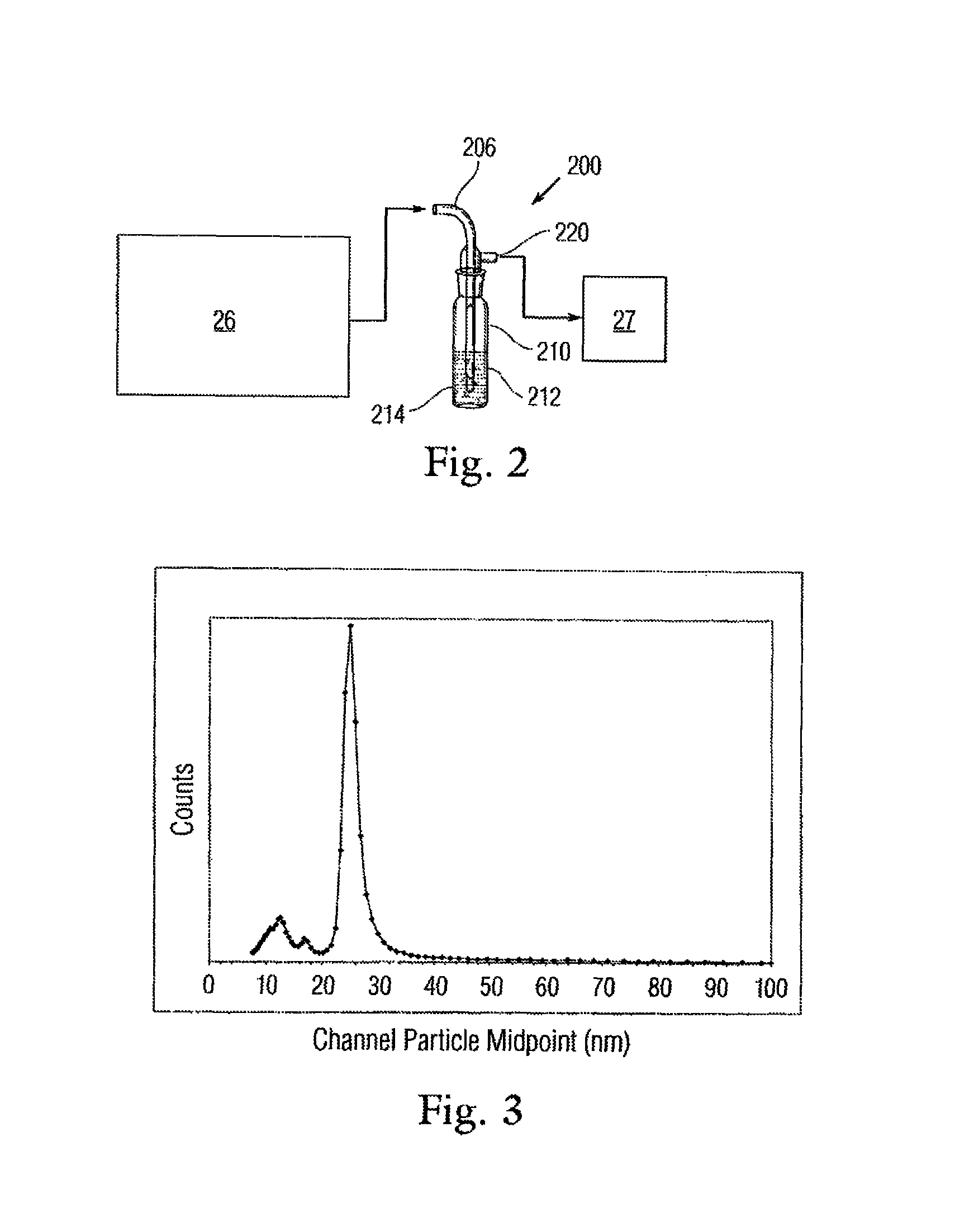Virus and particulate separation from solution
a technology of virus and particulate solution, applied in the field of small particle separation, can solve the problems of affecting the precise molecular biology process of samples that contain mixtures and environmental components, affecting the precise molecular biology process of samples, and presenting multiple viruses in real-world samples, etc., and posing a difficult prospect for current systems
- Summary
- Abstract
- Description
- Claims
- Application Information
AI Technical Summary
Benefits of technology
Problems solved by technology
Method used
Image
Examples
Embodiment Construction
IVDS Differential Mobility Separation
[0062]The RIDS analyzes viruses and other nanometer sized materials by separating particles according to their mobility in an electric field. The electrical mobility of a particle is a function of its size and the number of charges in contains. For particles in the size range of a few nanometers the electric charge that a particle will acquire is limited to a single elemental charge that is forced by the passage of the aerosol stream past an ionization module. Thus, the mobility of the charged particles in an electric field will be limited to their size only.
[0063]The differential mobility analyzer (DMA) 26 of the IVDS is comprised of a cylinder with a central rod. A controlled DC potential differential (0-10,000 VDC) is applied between the cylinder and the central rod. By controlling this potential, only particles with very narrow electrical mobility (size) are allowed to enter the opening slit at the bottom of the cylinder and exit the DMA. Due...
PUM
| Property | Measurement | Unit |
|---|---|---|
| size | aaaaa | aaaaa |
| flow rate | aaaaa | aaaaa |
| diameter | aaaaa | aaaaa |
Abstract
Description
Claims
Application Information
 Login to View More
Login to View More - R&D
- Intellectual Property
- Life Sciences
- Materials
- Tech Scout
- Unparalleled Data Quality
- Higher Quality Content
- 60% Fewer Hallucinations
Browse by: Latest US Patents, China's latest patents, Technical Efficacy Thesaurus, Application Domain, Technology Topic, Popular Technical Reports.
© 2025 PatSnap. All rights reserved.Legal|Privacy policy|Modern Slavery Act Transparency Statement|Sitemap|About US| Contact US: help@patsnap.com



